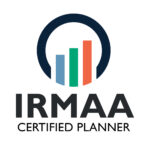IRA pre-tax? This is a common question among financial professionals and savers. This guide will look into the nuances of Roth IRAs, discussing their tax implications and how they differ from traditional IRAs with respect to pre-tax versus post-tax contributions.
We will delve into the key differences between Traditional and Roth IRAs, particularly in terms of pre-tax versus Roth choice. You’ll learn about the advantages of making post-tax contributions to your retirement savings and how it could potentially put you in a higher future tax rate bracket.
This guide also covers the flexibility offered by withdrawals from a Roth IRA. From understanding its impact on inheritance planning to managing Medicare’s Income Related Monthly Adjustment Amount (IRMAA), we’ve got you covered.
Finally, we present an insightful case study featuring a dual earner married couple planning their retirement strategy with both types of individual retirement accounts. Is a Roth IRA pre-paid or post-payment? Read on to find out more!
Understanding Roth IRA and its Tax Implications
A Roth IRA is like a tax-free savings account for your retirement. By contributing to a Roth IRA now, you can enjoy tax-free withdrawals when you retire. It’s like winning the retirement lottery.
Key Differences Between Traditional and Roth IRAs
Traditional IRAs are like getting a tax break today, but paying the piper later. With a Roth IRA, you pay your taxes now, but you get to enjoy tax-free withdrawals in the future. It’s like paying your taxes in advance and then getting a free pass later on.
Benefits of Making Post-Tax Contributions
- Tax-Free Withdrawals: With a Roth IRA, you can withdraw your money in retirement without Uncle Sam taking a cut. It’s like having your cake and eating it too, without any guilt or taxes.
- No Required Minimum Distributions (RMDs): Unlike traditional IRAs, Roth IRAs don’t force you to take money out when you reach a certain age. It’s like having the liberty to maintain your funds in the account for as long as desired.
- Estate Planning Benefits: If you want to leave a financial legacy for your loved ones, a Roth IRA can be a smart choice. Your beneficiaries won’t have to pay taxes on the money they inherit. It’s like giving them a tax-free gift from beyond the grave.
Flexibility in Withdrawals from a Roth IRA
Investing in a Roth IRA is like having a financial superhero by your side. It offers more flexibility than traditional IRAs, so you can withdraw your money without penalties or tax troubles.
Advantages of Flexible Withdrawal Options
With a Roth IRA, you can withdraw your original contributions whenever you want, tax-free. It’s like having a secret stash of cash for emergencies or spontaneous shopping sprees.
Unlike traditional IRAs, Roth IRAs don’t force you to take minimum distributions when you reach a certain age. You can allow your funds to accumulate without taxation for however long you choose. It’s like having a money tree that never stops giving.
Impact on Inheritance Planning
Roth IRAs are not only great for your own financial security but also for your loved ones. When you pass away, your beneficiaries have ten years to withdraw the money without worrying about taxes. It’s like leaving them a tax-free treasure chest.
Unlike inheriting a traditional IRA, which could push your heirs into higher tax brackets, inheriting a Roth IRA keeps their tax liability low. It’s like giving them a gift that keeps on giving, without the taxman knocking on their door.
Just remember, after the ten-year window, your beneficiaries need to distribute the remaining balance by December 31st of that tenth year. It’s like a deadline for them to claim their financial fortune.
Roth IRAs are not only a smart retirement planning move but also a way to manage potential future Medicare costs, like the dreaded Income Related Monthly Adjustment Amount (IRMAA). It’s like having a secret weapon against healthcare expenses.
Deciding Between Pre-Tax or Post-Tax Investments
Deciding between pre-tax or post-tax investments is akin to selecting between a complimentary banquet and purchasing an extravagant meal. It depends on your age, income, and future earnings potential.
Factors influencing investment decisions
When it comes to pre-tax investments, like traditional IRAs, or post-tax options, like Roth IRAs, your current tax bracket is the main player. If you’re in a high tax bracket now but expect to be in a lower one during retirement, go for pre-tax. If you anticipate a higher tax bracket in retirement, consider investing in a Roth IRA.
Your age matters too. If you’re youthful and have the advantage of time, investing in a Roth IRA with post-tax dollars could be a savvy decision.
Evaluating potential return on investment
Now, let’s talk about the expected return on investment (ROI). This is where you compare how much your money can grow in each type of account, considering their unique taxation rules and projected market returns.
For a little help with this evaluation, check out online calculators that compare Traditional vs Roth IRAs, like this one from Bankrate. They can give you insights into different scenarios based on factors like contribution amounts and expected rate of return.
Remember, while traditional IRAs offer upfront deductions, they might not lead to greater wealth accumulation compared to the potential benefits of investing post-taxed funds in a Roth IRA. Plus, you can withdraw those assets tax-free in later life if you meet certain conditions. So, weigh short-term advantages against long-term gains before making a decision that suits your financial needs and goals.
Case Study – Dual Earner Married Couple Planning Retirement Strategy
If you’re a financial pro, you’ve probably dealt with dual earner married clients. They’re in their fifties, aiming to retire at sixty-five and live another thirty years afterwards. The big question for this couple is whether to use Roth IRAs or stick with pre-tax funds.
Scenario Analysis Comparing Different Strategies
Let’s break it down for this couple. They’ll get $56k in annual Social Security benefits starting at 65. If they go with traditional IRAs, they’ll get a tax break upfront but pay taxes when they withdraw during retirement.
On the other hand, if they choose Roth IRAs, no immediate tax benefit, but all withdrawals during retirement are tax-free. This might result in noteworthy long-term financial savings, particularly if tax rates alter.
Potential Impact on Heir’s Inheritance
The choice between Roth IRA and traditional IRA can also affect the inheritance under SECURE Act rules. Beneficiaries must withdraw all assets from inherited accounts within ten years after the account holder’s death.
If our hypothetical couple goes with traditional IRAs and passes away after retiring, their heirs will face hefty taxes on withdrawals due to mandatory distribution requirements. This could seriously shrink the inheritance, depending on income tax rates at the time.
But if the couple had chosen Roth IRAs instead, even without upfront deductions, not only would their contributions grow tax-free, but the entire balance, including earnings, could pass on to heirs completely tax-free. Thanks to the unique features of Roth structures regarding inheritances.
Managing Medicare’s Income Related Monthly Adjustment Amount (IRMAA) through Investment Strategies
Choosing between a Roth IRA and a traditional IRA is like deciding between a tax party now or later. With a Roth IRA, you pay taxes upfront but enjoy tax-free withdrawals later on. It’s like getting a VIP pass to the tax-free zone.
Assessing the Impact on Medicare Costs
A certified financial planner can help you navigate the complexities of Medicare costs and ensure your retirement savings strategy considers potential future tax rates and social security taxes. Don’t let IRMAA rain on your retirement parade.
Having a range of pre- and post-tax investments in your portfolio is like having lots of clothing choices. Tax diversification gives you the flexibility to choose from different ‘tax buckets’ depending on your needs and market conditions. It’s like having a financial fashion show.
If you’ve already accumulated a hefty sum in your traditional IRA, consider doing periodic Roth conversions. Turning your traditional IRA into a Roth IRA gradually can help to lower future Required Minimum Distributions (RMDs) and avoid IRMAA surcharges. Sure, it may trigger an immediate tax bill, but it can reduce future Required Minimum Distributions (RMDs) and keep those IRMAA surcharges at bay.
Strategic Roth conversions, done under the guidance of a tax-savvy advisor, can be a game-changer. It’s like playing chess with the tax code and winning. Just remember, paying income taxes now may sting a little, but it’s like investing in a tax-free future.
While we can’t predict the future, it’s safe to assume that taxes will always be a part of our lives. So, why not plan ahead and consider these investment strategies? It’s like building a financial fortress that can withstand any tax storm.
Key Takeaway:
This section highlights the importance of managing Medicare’s Income Related Monthly Adjustment Amount (IRMAA) through investment strategies. It suggests considering a Roth IRA for tax-free withdrawals in retirement and utilizing strategic Roth conversions to reduce future Required Minimum Distributions (RMDs) and IRMAA surcharges. The goal is to have a mix of pre- and post-tax assets, like having different ‘tax buckets’, to provide flexibility and protection against potential future tax increases.
FAQs in Relation to Is Roth Ira Pre Tax
“`html
– Any other retirement plans not relevant to the topic.
– Personal opinions or advice on investment strategies.
– Legal implications of Roth IRA and pre-tax 401k.
Is a Roth IRA pre-taxed?
No, contributions to a Roth IRA are made with after-tax dollars.
At what age does a Roth IRA not make sense?
A Roth IRA may be less beneficial for those in their late 50s or older who expect to be in a lower tax bracket during retirement.
Is a Roth 401k the same as a Roth IRA for tax purposes?
No, while both involve post-tax contributions, there are differences in withdrawal rules and income limits between Roth 401(k) and Roth IRAs.
Is it better to do Roth or pre-tax 401k?
The choice depends on individual circumstances such as current tax rate, expected future earnings, and planned retirement lifestyle.
“`
Conclusion
Understanding the tax implications of a Roth IRA is crucial for financial pros – it’s like knowing the secret handshake of the investment world.
Contributions to a Roth IRA are made with after-tax dollars, but don’t worry, the benefits of tax-free withdrawals in retirement make it worth it – it’s like finding a pot of gold at the end of the tax rainbow.
Deciding between pre-tax or post-tax investments depends on various factors – it’s like choosing between a slice of cake or a scoop of ice cream, both delicious but different.
Managing Medicare’s Income Related Monthly Adjustment Amount (IRMAA) through investment strategies is essential for retirees – it’s like playing chess with your healthcare costs, making strategic moves to protect your financial kingdom.
This blog post has provided valuable insights into the question “is Roth IRA pre-tax” – it’s like having a wise financial guru whispering the answers in your ear.
So, whether you’re a financial pro or just someone trying to make sense of retirement planning, remember the importance of understanding Roth IRA tax implications and managing healthcare costs – it’s like having the keys to a treasure chest of financial security.


